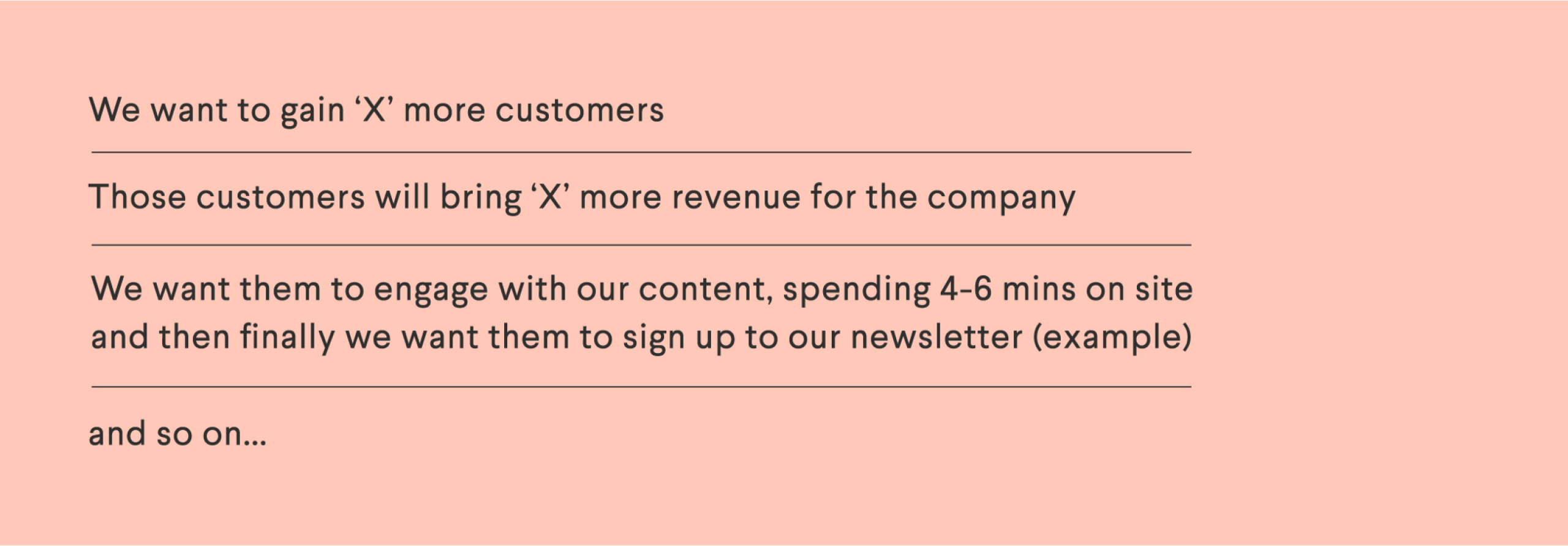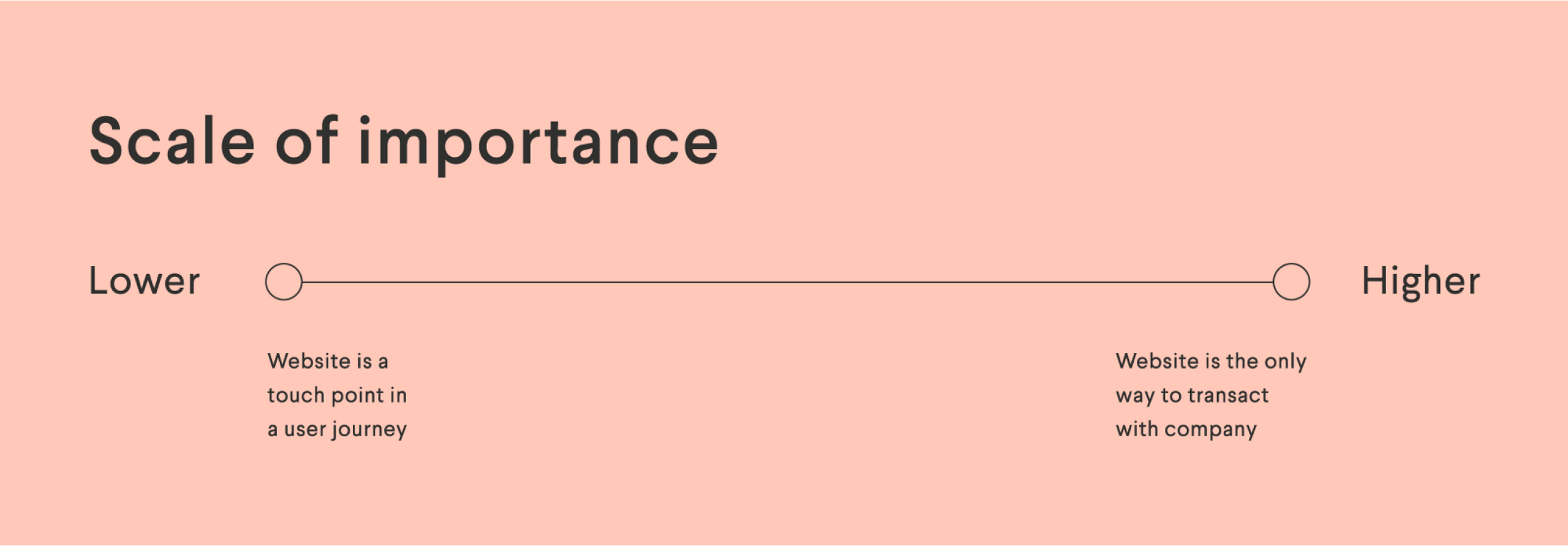New website? Don’t start dialling the agency yet.
The market shifts. Business changes. Things evolve. Customers want new stuff. That’s the game of commerce. It’s these shifting sands that create the need to constantly evolve brand, and in modern times, the manifestation of brand and communications — your website.
Websites are a major vehicle that put our ideas and problem-solving abilities right under the nose of our audience. If you’ve had the tap on the shoulder and have been handed a number to go forth and find a web studio to build your new vehicle of change, stop right there. Don’t start dialling agencies just yet.
Plucking a number from the hallowed spreadsheet-of-all-knowingness is exactly the opposite of how you should be budgeting for a new build.
Disconnect your website from your budget…please, just for a minute.
Budgeting also happens to be a manifestly inadequate term. Let’s get on the same page here. It’s an essential business investment. View your spend as an investment, which by definition is an action or process of investing money for profit.
Your business goals need to play a huge part here. You never start a business by deciding on a budget. You come up with a business case, a plan, a strategy — and then figure out how much it takes to operate. Websites aren’t any different.
It’s helpful to suspend reality for a moment;
Don’t pay attention to the number you put in the forecast for this year
Don’t give too much air time to the number your boss just handed you
Why? Because all that reality clouds what’s possible.
Seriously, so much of our thinking is messed up by ‘budget’.
What company ever doubled sales just by simply saying we want double growth? No, you have to make a plan, do things differently and invest money upfront to make stuff happen.
Start with this question;
If we want [insert your number here] new customers this year, what would our website need to do in order to achieve that?
Some good conversation will come from asking this simple question:
What is this website actually doing?
What is the goal? (Is it to log in, or sell units?)
Do we want to change the perception of our brand?
Are we saying the right stuff to our audience?
Is it to gain new customers or serve existing ones?
From having this conversation with yourself or the team, disconnected from a budget, you’ll most likely land on a scenario that looks this;

What is a new customer actually worth to your business?
If your website is meant to service new customers, then think about what that customer is actually worth over a period of time. That places investment in a whole different context because you’re amortising the website cost over that same time period.
To find out your average customer’s worth, start with these questions:
How much does your customer spend with you per year/period
How long will you retain that customer (what is the life cycle length?)
What then, is the lifetime value of that customer?
What other services or products could you cross-sell?
How much can this website cut down on internal processes?
There are more cost savings to consider. Think about how a new site could cut down on your admin with:
More efficient signups
A support section
Higher value leads due to more targeted content
Let’s look at a quick example…
Let’s say you’re a cloud-based HR software business, and you need a new website to create better quality leads. This will require dozens of new pages of content. But each one of those new customers provides you with a lifetime value of $5,000 (over three years).
If you believe that a newly designed website could provide you with 2000 new qualified leads over three years based on that targeted content, a conversion rate of 5% results in $500,000 over that same time.
Let’s also say your staff could save 10% of their time due to:
fewer tech errors;
an easier way to find customer information or;
deployed automated workflows
If you pay 10 people an average of $80,000 each, 10% of their time is a collective $80,000. Time they can spend building more tools to capture those customers.
Would you be willing to spend 10% — $58,000 — to win $580,000? We could debate the math, but the principle is the same: this is how you should be thinking about your website investment.
Investment is not one size fits all.
Every business is different and it makes little sense to apply the same spend formula to all businesses. You might be a law firm who invests time in speaking at events, networking and coffee meetups and as a result, a lot of your leads come from good old shoulder rubbing. In other words, you invest in ‘get noticed’ tactics other than pure digital. Your website is important in shaping your brand messages but could be considered as a micro interaction in the user journey, therefore your business success is less reliant on the website as the conversion point.
On the other hand, you might run an e-com business or software product, where you have very little interaction with the client and your website isyour business. The way you view investment into this asset should differ from other industries or business types.

So how much should I invest?
Well, that’s a pretty darn hard question to answer. You could take a formulaic approach but that’s probably selling the whole process short. Take for example your turnover-to-marketing spend. It’s been a long-held belief that 5–10% of your revenue should go to marketing spend. It doesn’t take much digging to find out that some companies spend far less than this, while others spend double the ‘recommended’. It really depends on the use case, the industry, the operating margins and so on.
So where does that leave us?
Focusing on the value and return is probably the way forward
If you’ve asked the big questions about what your web asset should do for your customers, you’ve built the start of a requirements list. If you’ve set some targets around customer acquisition, then you have a grip on the financial opportunity of a rebuild and if you combine this with your current turnover, you’ve got a good idea about what your % investment spend might look like. Just don’t get to wedded to that number before you start reaching out to design agencies because their input will also help shape your thinking around the investment.
Bottom line: Be sceptical of ‘plucked-from-the-air’ budgets and put some thinking behind the investment number for building web assets. This way you’ll end up with a better, more thoughtful website that should perform at a higher level and deliver value well beyond the cost.

